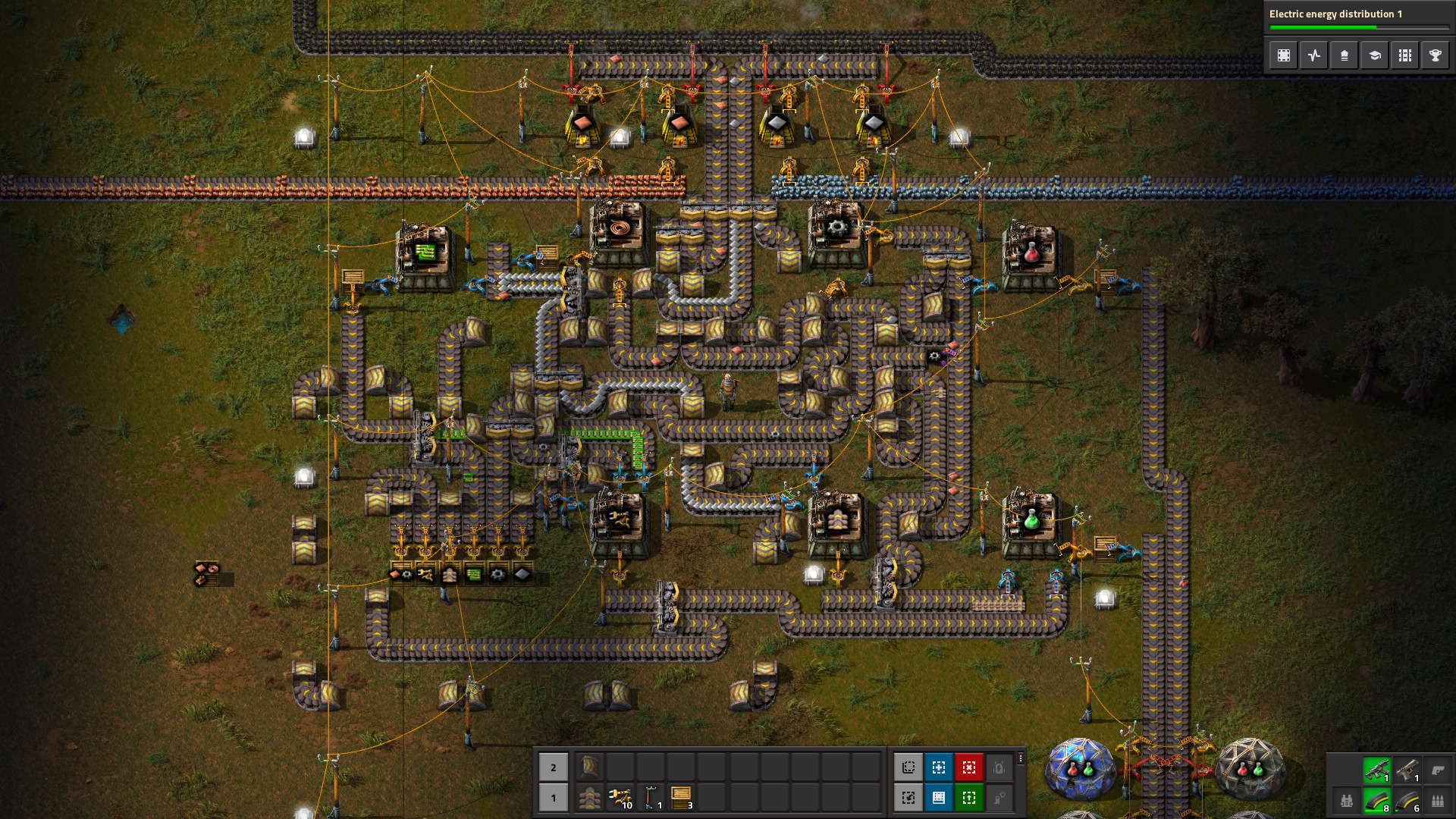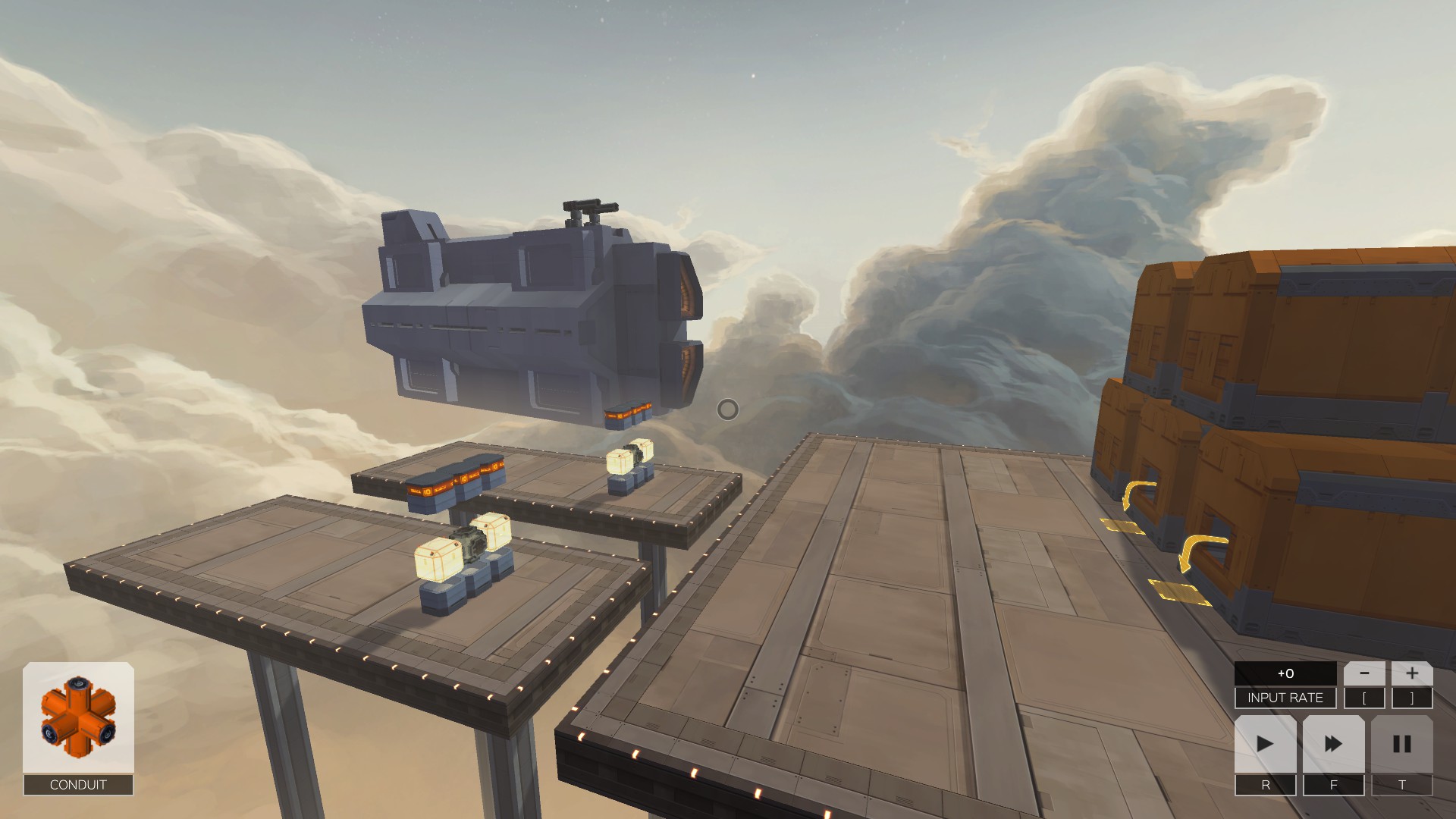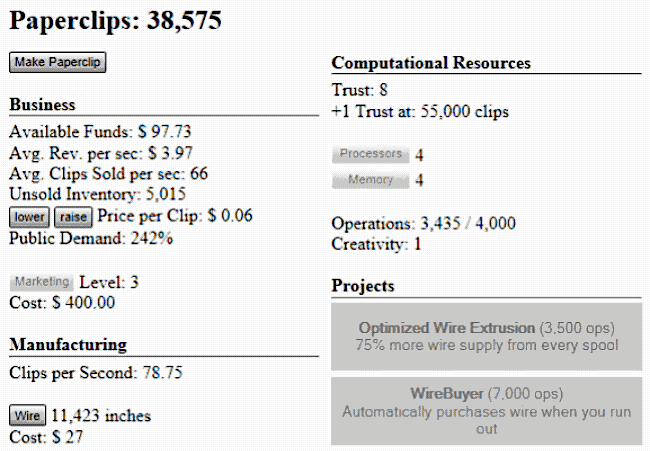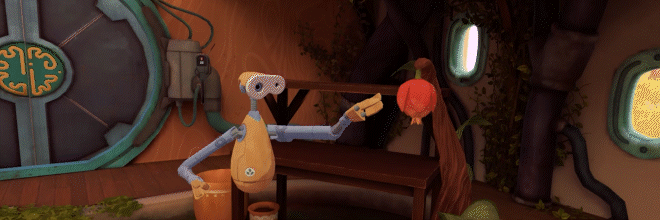I played The Last Clockwinder last week, and it changed the way I think about production games.
Factory games
The Steam page describes The Last Clockwinder as a “VR puzzle-automation game.” I like production and automation games. But I’m used to FTB and Factorio and Zachtronics and Universal Paperclip. I’m used to the look automation-production games gravitate towards.

Factorio’s top-down design invites you to create sprawling factories that completely overtake the landscape. What little detail there is in the landscape is purely mechanical; resources you can extract and process, or enemies you have to either avoid or exploit for more resources.
Positioning the camera to give yourself a comfortable view of the structures you build and the items you’re manipulating leaves the actual character as a tiny focal point; more of a crosshair than a character or even an avatar.
Factorio scales enemy difficulty to “pollution” but this is always designed to be overcome, not be a legitimately limiting factor.

In Infinifactory, you’re captured by aliens and forced to engineer efficient factories in exchange for food pellets. Each puzzle takes place in a set of stark, desolate environments. It’s first-person, but you never directly interact with another character; the most you get are notes about how much your predecessors hated it.
As soon as you solve a puzzle, you’re presented with a histogram: how could you optimize your solution further? Could you be faster? Use fewer blocks? Are you better than your friends, or falling behind?

Universal Paperclip’s minimalist HTML interface makes it a graphical outlier, but the bare-metal minimally-styled HTML invokes a sense of brutalism that reenforces the game’s theme of efficiency in the pursuit of a goal to the exclusion of everything else.
And then there’s The Last Clockwinder.
The Last Clockwinder
It’s undeniably hard sci-fi. The first thing you do is arrive in spaceship. Throughout the game you’re on the radio with your friend idling in orbit, and the whole story revolves around interplanetary travel.
But then the first thing you see is a tree-patio with a hammock. It almost feels like a treehouse. The purpose of the tree is archival and preservation of rare and culturally significant plants; it’s a reserve, and that’s what gives it such importance. Inside the tree is the one room you stay inside for the entire game, and it’s a living space.
The comfortable area doesn’t do anything. I walked through it once at the beginning of the game to listen to the recordings, but after that it doesn’t serve any mechanical purpose. You can’t sit on the chairs or read the books, and you don’t need to cleverly use the space to solve any of the puzzles. But the space is always there, because the space isn’t really for you-as-the-player, it’s there for the people who live in it.
As you work your way through the puzzles, every entity is alive and vibrant. Your resources are fruit, or seeds to create fruit. When you briefly dive into complex construction, it’s building “molecules” out of fruit in order to make grist to create seeds.
It is, in a word, solarpunk.
Now, arguably, I knew most of this going in. The asthetic is a selling point they used to advertise the game. But even having seen the store page, I wasn’t ready for The Last Clockwinder. VR really puts you in the space in such a way that tne environment can really sink in and get into your head, moreso than you’d expect.
And I haven’t even talked about the robots yet.
The main mechanic of the game, the tool you use for the automation, are these… little guys. You place them by recording your own movements, and they repeat them on loop.

This is another case where the VR does something magical. The robots repeat your physical movements. Not your commands, not your programming, your movements. You can look at them and see them stretch, or jump, or not be sure what to do with their hands. It’s incredibly personal in a way that’s almost exactly opposite the realisticly factory-like movements of the machines in Factorio and FTB and Opus Magnum.
There are no gears or metal or engines. And when there are engines — as plot points, not as mechanics — they’re still the most solarpunk things imaginable. One’s a frog.
Production games
Sandbox production automation games like Factorio have encoded in the gameplay this implicit exponential growth function. As you automate the production function, you move on to automating the integral of the production function, and so forth. But the reality is that only works when you have an unlimited ability to consume resources and space.
In The Last Clockwinder, there’s not infinite room and there’s no exponential growth. Every marginal improvement is a massive undertaking that you can’t spend resources to help. There’s no self-reenforcing feedback loop; if a room only has one knife in it, you have to stretch that knife increasingly thin if you want to cut more fruit within the same amount of time.
So at the end of the day, just by the nature the environment and how the gameplay mechanics framed themselves, The Last Clockwinder really challenged a lot of my preconceptions of what automation games were like, in a really interesting way. So much so that I had to pause what I was writing and get my thoughts down on paper.
Maybe sci-fi automation games that draw so heavily on the asthetics and sentiments of the industrial revolution and factory lines aren’t being as creative as they need to be. There are so many interesting ideas that games and fiction in general give us the oppertunity to explore. And if a game is just mining for resources, but sometimes there’s a skeleton, is that even science fiction, or just a setting for an allegory on the dangers of capitalism?


 gaming
gaming